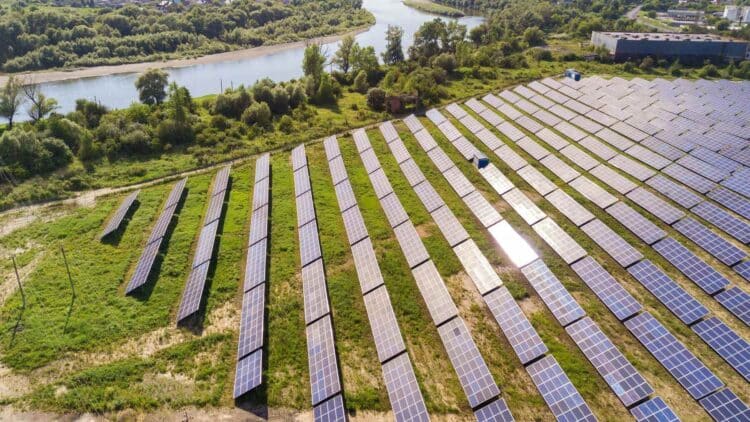Saudi Arabia has just announced an ambitious plan: an investment of US$8.3 billion in solar and wind energy projects by 2028. The goal is to add an additional 15,000 MW to its clean energy capacity, and this goal is part of an energy transition strategy. This announcement is part of a series of measures by the country to reduce its dependence on oil and other fossil fuels, an environmental goal to be achieved by 2030. This initiative is expected to bring together large state-owned and private companies and transform the Saudi energy landscape.
How will this investment by Saudi Arabia work?
This significant investment, worth US$8.3 billion, was officially confirmed through agreements with several Saudi companies, such as ACWA Power, Badeel (a subsidiary of the Public Investment Fund (PIF), and SAPCO, the energy arm of Aramco. These companies signed power purchase agreements (PPAs) with the Saudi Power Procurement Company (SPPC) for seven major new renewable energy projects.
Of these projects, five are focused on solar energy (totaling 12,000 MW) and two are part of the wind sector (3,000 MW). Some of these plants will be distributed across provinces such as Asir, Medina, Mecca, and Riyadh, and are expected to begin operations between late 2027 and early 2028, following financial close in 2025.
Motivations and strategic objectives behind this new project
Saudi Arabia has already stated that it wants at least 50% of its electricity production to come from renewable sources, at least by 2030. This decision is part of a Council called Vision 2030. This renewable energy program is part of the country’s efforts to diversify its economy and reduce its dependence on oil as its sole source of income.
Furthermore, renewable plants are expected to generate local employment, boost a new supply chain, and attract new international investors, particularly those interested in sustainable projects in the Middle East. Saudi Arabia has some natural advantages, such as abundant sunlight, available land, and competitive solar energy costs, all of which allow new parks to be built efficiently and at scale.
What are the challenges and risks in implementing this project?
Building a project like this is no easy task. One of the country’s biggest hurdle is ensuring grid infrastructure (transmission, connection, and other related factors) capable of delivering this energy to consumption centers, especially in more isolated regions. Another challenge is financing and regulatory issues. Because energy prices are competitive, long-term contracts are a way to guarantee returns for investors.
Furthermore, there are climate and environmental risks, such as inconsistent winds, sandstorms, and extreme heat. These are factors that can affect the performance of the facilities and may ultimately require constant maintenance. This implementation will require collaboration between the government, private companies, and public funds. PIF, as a shareholder and financier of the project, will be a key player in ensuring stability and long-term commitment.
Companies like ACWA Power are expected to lead technical projects, while SPPC will act as the purchaser of the energy produced, ensuring stable revenues. The ability to attract international suppliers of panels, turbines, and other efficient components for the project will be necessary, and this will be crucial to avoid bottlenecks in the production chain.
Impacts on society and the market
The US$8.3 billion program announced by Saudi Arabia marks a bold step toward its energy future. By targeting 15,000 MW of clean energy, the country is seeking to transform its economic and environmental landscape.
If executed efficiently, this renewable energy package could redefine Saudi Arabia’s role on the global energy map. With abundant sunlight and political ambition, the kingdom is betting that gift of green energy will be driving force of its future. And for those closely following the energy transition, this is a project worth watching.


